In 2017, we discovered exoplanets with conditions totally unsuitable for life, Cassini concluded its mission with a suicidal dive into Saturn, NASA outsourced the processing of stunning images of Jupiter to the general public, astronomers and planetary scientists continued to argue over whether Pluto was a planet, Blue Origin successfully tested an unmanned Crew Capsule and not one single SpaceX rocket blew up. The Cassini Mission to Saturn came to a conclusion The 20-year long Cassini mission ended spectacularly with the spacecraft diving into the atmosphere of Saturn, becoming a shooting star in the turbulent skies of the gas giant. Normally, there would have been a six-hour gap between the spacecraft collecting data and then relaying it to ground stations on Earth. For the final dive however, the instruments on board the spacecraft beamed back the data continuously until the very moment the Spacecraft exploded. NASA decided to end the mission as the spacecraft was low on fuel and it would no longer have been possible to maintain control of the spacecraft. With no means of controlling it, Cassini could have drifted into one of the moons of Saturn, contaminating the surface and potentially harming any life forms harboured by those distant moons. Two of the Saturnian moons are of particular interest in this regard. [caption id=“attachment_4280725” align=“alignnone” width=“1024”] Water gushes out in spouts from a global subsurface ocean on Enceladus. Image: NASA[/caption] Enceladus has most, if not all of the ingredients necessary to support life as we know it on Earth. Titan has an atmosphere and liquid methane lakes that could host an exotic form of life. This form of life could be methane based and would not need oxygen to survive. On Titan, Cassini has found evidence of molecules that can be the building blocks of life . NASA plans to use a dual-quadcopter type vehicle called Dragonfly to explore the surface of Titan to study the prebiotic chemistry as well as to investigate the habitability of several sites. Another concept mission, called Enceladus Life Signatures and Habitability (ELSAH), will research cost-effective ways to limit contamination by spacecraft, allowing future missions to carry instruments designed to detect life. [caption id=“attachment_4270243” align=“alignnone” width=“1280”]
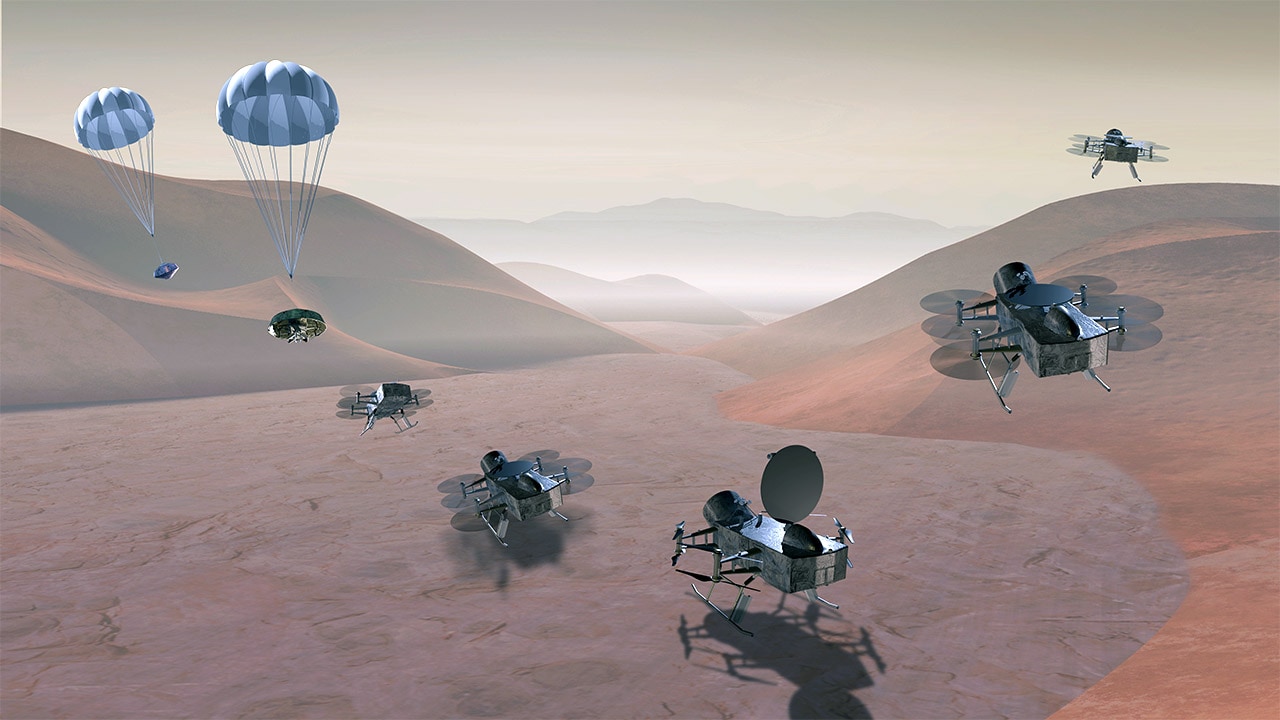 Concept art of the Dragonfly mission to Titan. Image: NASA[/caption] NASA has released an image captioned “A Farewell to Saturn” , a mosaic of photographs captured by Cassini two days before it crashed into the surface of the planet. The single image contains several moons in the Saturnian system, Prometheus, Pandora, Janus, Epimetheus, Mimas and Enceladus. The image will be the last, complete picture of Saturn available till a follow up mission reaches the gas giant. For those personnel at NASA who had worked on both the Cassini and Voyager missions, the moment was reminiscent of the time when Voyager first captured images of Saturn. [caption id=“attachment_4270185” align=“alignnone” width=“825”]
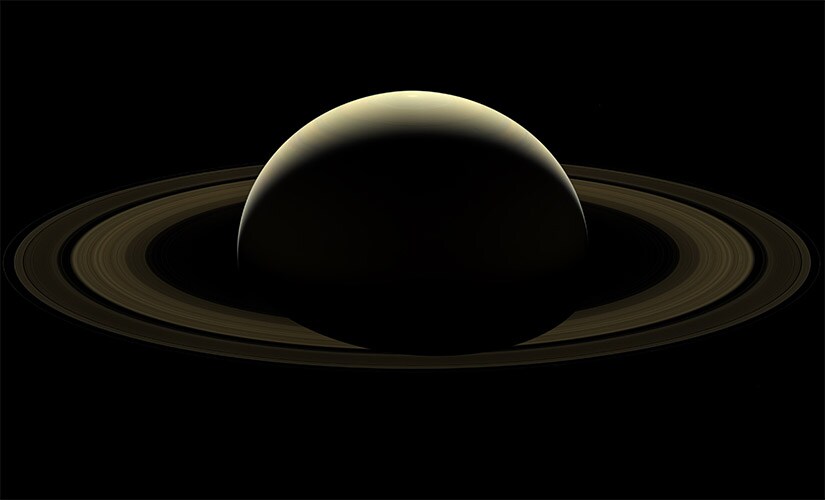 “A Farewell to Saturn”. Image: NASA[/caption] Carolyn Porco, a former Voyager imaging team member, who is also the leader of the Cassini imaging team said, “For 37 years,
Voyager 1’s last view of Saturn has been, for me, one of the most evocative images ever taken in the exploration of the solar system. In a similar vein, this ‘Farewell to Saturn’ will forevermore serve as a reminder of the dramatic conclusion to that wondrous time humankind spent in intimate study of our Sun’s most iconic planetary system.” On its way to the final, science-rich dive, Cassini bid farewell to many of the moons of Saturn that it had studied for so long. This process of the final observation runs of the moons took place over many months. In March 2017, Cassini bid farewell to the pockmarked moon Mimas, which has earned the moniker of the Death Star, because of the large and prominent Herschel crater. [caption id=“attachment_4270191” align=“alignnone” width=“1280”]
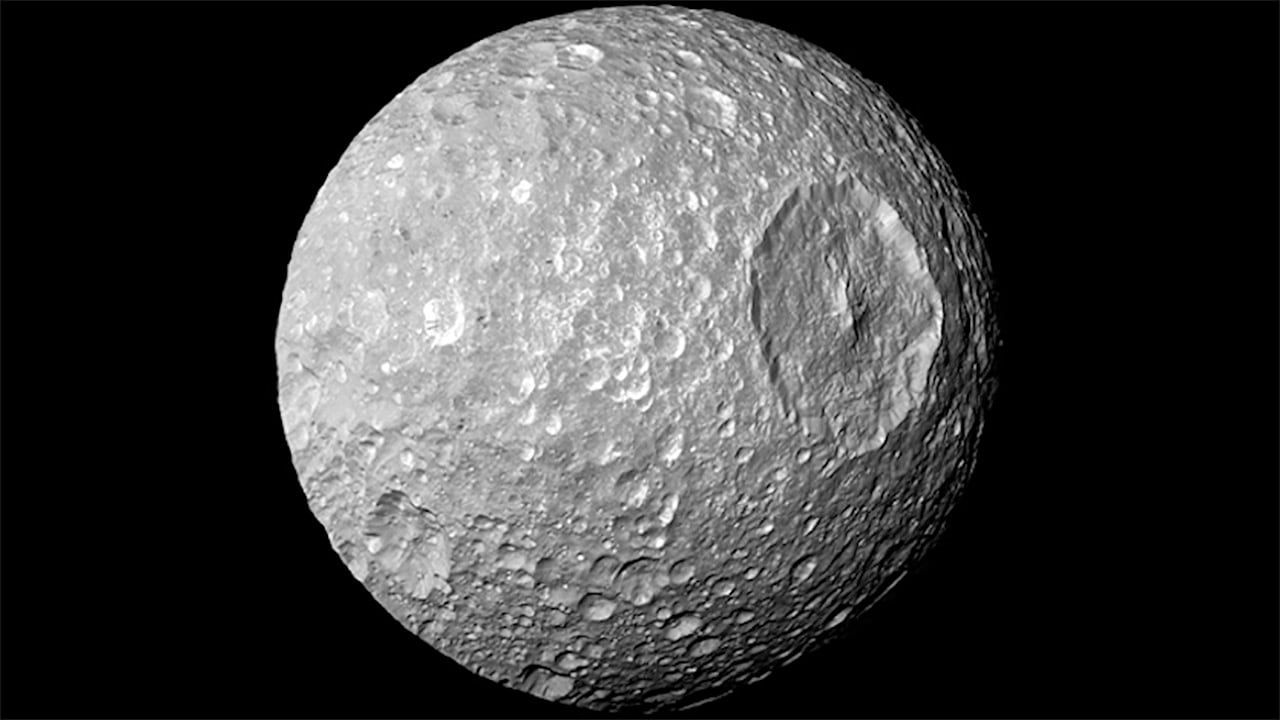 Mimas, the “Death Star” moon of Saturn. If you’re wondering why it’s called that, you’ve wasted your childhood. Image: NASA[/caption] In May 2017, Cassini executed its final flyby of Iapetus, also known as the Yin-Yang moon, and in August 2017, Cassini observed the water jets emanating from a region near the south pole of Enceladus one last time. In September 2017, Cassini performed a slingshot manoeuvre around Titan, catapulting it into its fatal final orbits around Saturn. The exercise was called the “Goodby Kiss”. NASA has also released an image captioned “Alpha and Omega”, comprising of one of the earliest images of Saturn captured by Cassini, and the very last image showing the site where the spacecraft plunged into the surface. The two photographs together show just how far Cassini had travelled during the course of its mission.
Alpha and Omega: one of our first looks at Saturn, and one of our last. Details: https://t.co/n4g13S46mX pic.twitter.com/HHBJ9Ucanx
— NASA Solar System (@NASASolarSystem) November 27, 2017
Over the course of its mission, Cassini studied the atmosphere of Saturn, including moving methane clouds and the hexagonal jet streams around the north pole of the gas giant. Cassini also observed the tiny “waverider” moon, Daphnis and the disturbances it caused within the ring system. Peering through the hazy atmosphere on Titan that obscures surface details, Cassini found that the deep canyons there were flooded with liquid hydrocarbons. [caption id=“attachment_4270195” align=“alignnone” width=“1280”]
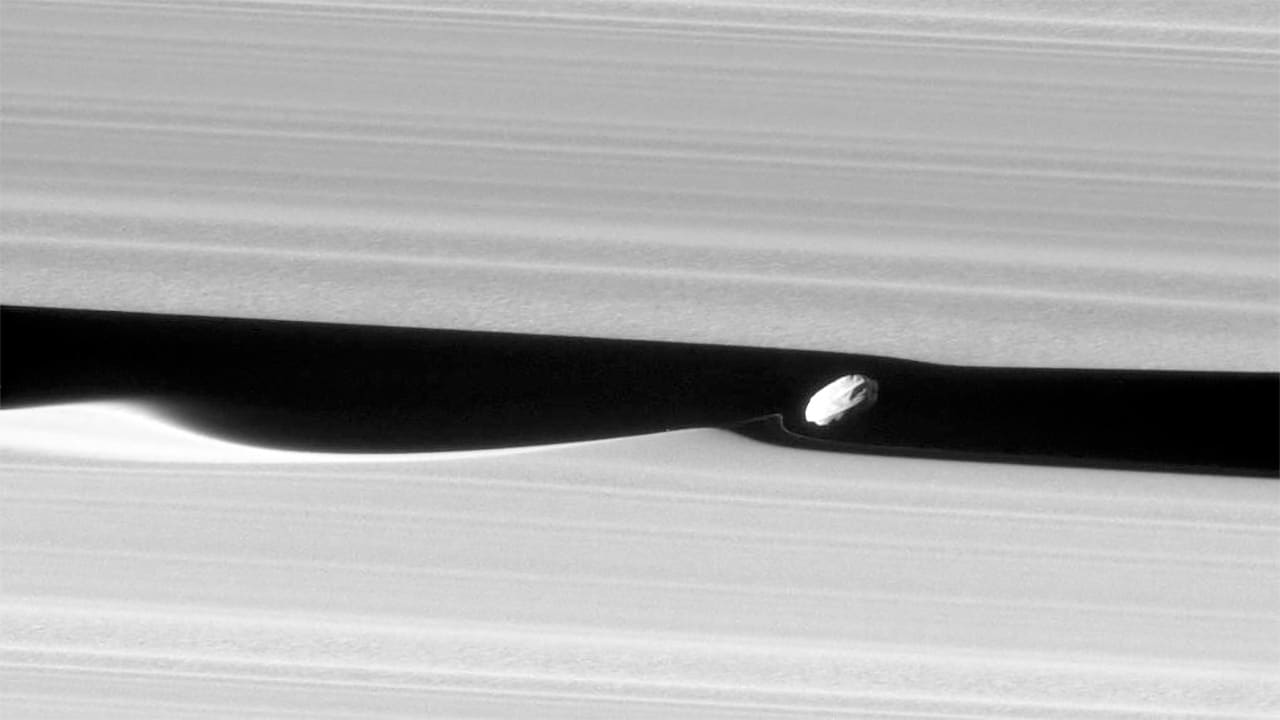 Daphnis, the “Waverider”. Image: NASA[/caption] The Cassini mission was a joint effort by NASA, the European Space Agency (ESA) and the Italian Space Agency (ASI). Although Cassini has become one with the planet that it studied for thirteen years, the data beamed back by the spacecraft is expected to play a role in scientific studies for at least another sixty years. Juno continued to unravel the mysteries of Jupiter Juno, NASA’s mission to another gas giant in the solar system, is carrying out its mission objectives very well and continues to engage citizen scientists and space enthusiasts as well as the imaging-processing community with the wonders of the most massive planet in the solar system. The spacecraft was deployed into orbit around Jupiter in 2016. The JunoCam instrument on board the spacecraft is not designed as a scientific payload, but was instead a way for NASA to increase engagement with its missions. However, scientists still use the images captured by JunoCam. Although NASA released raw images from the Cassini mission, as well as images processed by NASA, when it comes to the JunoCam mission, NASA hardly ever processes the images themselves. The JunoCam provides a steady stream of breathtaking views of the atmosphere on Jupiter, processed almost exclusively by the general public. For an imaging campaign that began in January, NASA crowdsourced the interesting locations that JunoCam would capture. Candy Hansen, co-investigator on the Juno Mission, said, “We are looking forward to people visiting our website and becoming part of the JunoCam imaging team. It’s up to the public to determine the best locations in Jupiter’s atmosphere for JunoCam to capture during this flyby.” It was incredibly cool that space aficionados sitting at home could photograph Jupiter. Over the course of the year, a number of images captured by the Juno mission, and processed by citizen scientists, have been released. The first of these was a series of massive storms that rotate in a counterclockwise direction in the southern hemisphere. It’s known as the “String of Pearls” . Towards the end of the year, Juno would train its eyes on the white storms again, with a single pearl from the “String of Pearls” clearly visible, with another in a distance. [caption id=”" align=“alignnone” width=“1041”] A single storm in the northern hemisphere of Jupiter. Image: NASA[/caption] In November 2017, NASA released a stunning image of a single storm in the northern hemisphere of Jupiter, processed by two citizen scientists, Gerald Eichstadt and Sean Doran. The image shows clouds formations at various altitudes. In December 2017, NASA released another image processed by the same pair of citizen scientists, Eichstadt and Doran, which showcased blue cloud formations, again in the northern hemisphere. Because of the angle of the Sun with respect to the gas giant when the image was captured, the clouds at a higher altitude were casting shadows on the clouds at a lower altitude. [caption id="" align=“alignnone” width=“1041”]
Cloud formations in the northern hemisphere of Jupiter. Image: NASA[/caption] Apart from reaching out to the general public and increasing the interest in space in general and planetary science in particular, Juno has also been engaged in scientific studies. It has probed beneath the clouds of the Jovian atmosphere, studied the auroras and investigated the planet’s internal structure and magnetosphere. Researchers have found out that the magnetosphere is more complicated than previously believed and that the auroras are created from a complicated current system that carries high energy particles from Jupiter’s volcanic moon, IO. Juno also detected a previously unknown radiation belt near the equator, consisting of energetic hydrogen, oxygen and sulphur ions moving at speeds close to that of light.
My latest #Jupiter science flyby is complete! All science instruments + #JunoCam were operating to collect data https://t.co/gITSYkWmO6 pic.twitter.com/fOc6Z8USdF
— NASA's Juno Mission (@NASAJuno) July 11, 2017
In November 2017, NASA engineers executed a tricky manoeuvre that required a complete cut-off of communications with the spacecraft. The transmission moratorium was put into place because the path of the signals between ground stations and the spacecraft would come too close to the Sun. Transmitting data or instructions during this time, known as a solar conjunction, could damage the sensitive instruments on board the spacecraft. The spacecraft executed a science flyby during the communications blackout and beamed home at a pre-programmed time after the conjunction. All the eight science instruments on board were working in perfect order. One of the biggest tasks for Juno this year was the closest flyby ever of the most interesting and well known feature on the gas giant. The Great Red spot is a storm raging on Jupiter and observed continuously since 1830. It is 16,000 kilometres wide, big enough to swallow the Earth whole. The storm has been shrinking, and was once wide enough to swallow three Earths. Juno passed just 9,000 kilometres above the storm during a close flyby in July 2017. The data collected from the storm allowed scientists to peer into its heart, leading to the finding that the roots of the Great Red Spot penetrate 300 kilometres into the atmosphere of the planet, about 50 to 100 times deeper than the oceans of Earth. True to form, when NASA released the images of the Great Red Spot from the closest every flyby, the images were raw.
Spot spotted! #JunoCam raw images from my #Jupiter #GreatRedSpot flyby are available now. Download, process + share https://t.co/zx6fcc7Fzu pic.twitter.com/NJafDJVVW6
— NASA's Juno Mission (@NASAJuno) July 12, 2017
The James Webb Space Telescope gets thoroughly tested The James Webb Space Telescope (JWST) is the largest space telescope ever and is the successor to the venerable Hubble Space telescope, which has captured stunning images of the depths of space. The JWST is an international project and a collaboration between NASA, ESA and the Canadian Space Agency (CSA). 18 gold-plated hexagonal mirrors form the primary 6.5-metre wide mirror, which makes the telescope powerful enough to spot a bumblebee as far away as the moon, from its thermal radiation alone. The telescope, which has been optimised for the infrared spectrum, will investigate other objects in our solar system, the atmospheres of exoplanets and the formation of the earliest stars and galaxies. It is expected to be used to understand why the atmosphere on Pluto is much colder than expected, and hunt for pairs of runaway stars. [caption id=“attachment_4270225” align=“alignnone” width=“1280”] 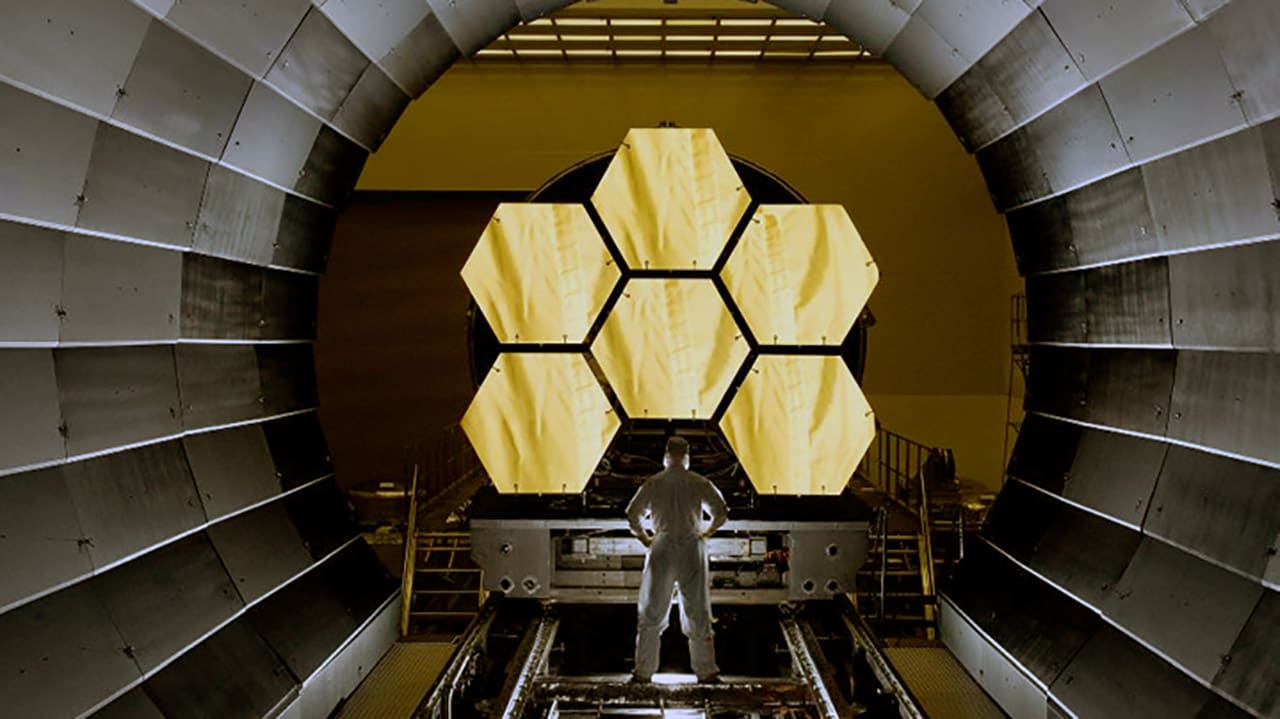 Some of the hexagonal mirrors on the JWST. Image: NASA[/caption] The construction of the JWST was completed towards the end of 2016, and the telescope was then on track for a launch in 2018. However, in October 2017, NASA announced that the launch of the telescope has been delayed to mid 2019 as the integration of the components of the telescope was taking longer than expected. Over the course of the year, the JWST was put through a series of rigorous tests to make sure that it performs as expected in the cold, airless, microgravity environment where it will spend most of its time. Future testing will also ensure that the sensitive images on the telescope are not damaged during the launch. [caption id=“attachment_4270231” align=“alignnone” width=“1280”] 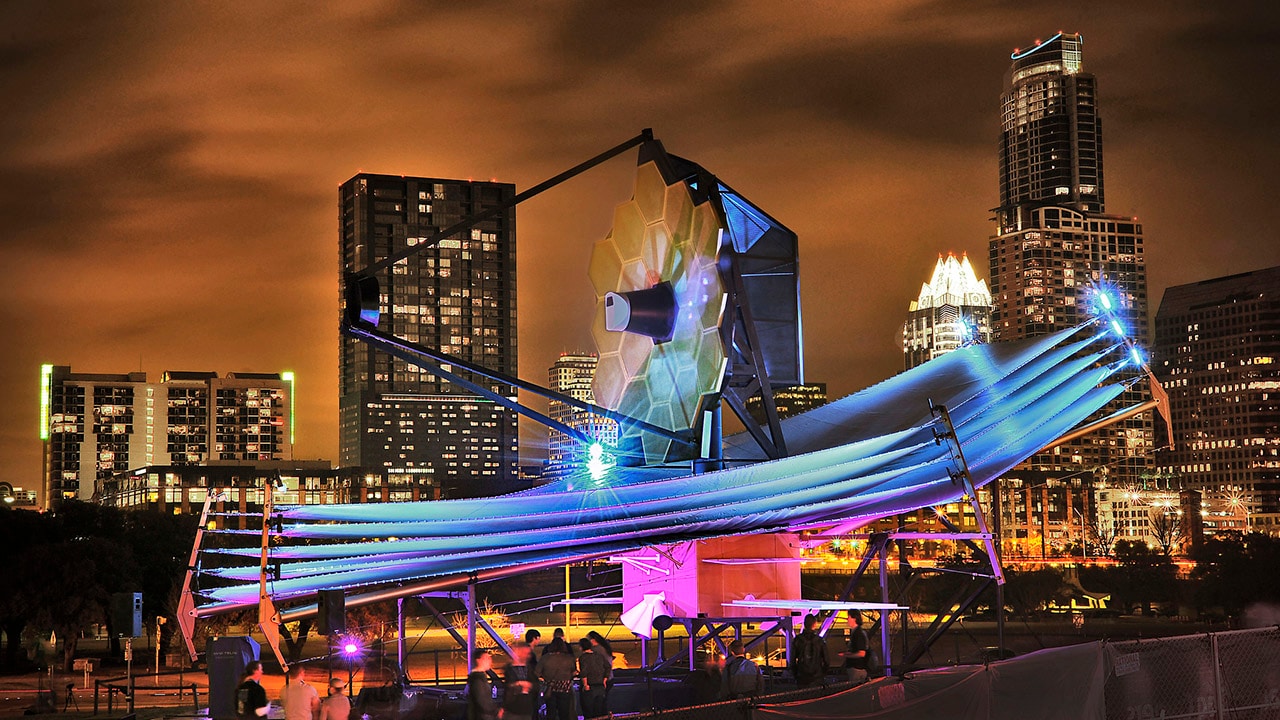 A model of the JWST[/caption] In November 2016, the JWST completed a 100 day end-to-end optical test in a sealed cryogenic chamber at the Johnson Space Centre in Houston. The 12-meter wide chamber was so massive that it had doors weighing 40 tonnes to seal it, and it took a week to pump all the air out. The testing on the telescope continued even as Hurricane Harvey raged around the facility. Prior to the testing at Houston, the JWST successfully completed environmental testing at another NASA facility, the Goddard Space Flight Centre in Maryland. One of the most exciting duties of the JWST will be to peer into the skies of alien worlds, looking for any signs of life. One of the most promising candidates for the JWST to study are the seven Earth-sized exoplanets in orbit around a star 40 light years away, called TRAPPIST-1. The JWST will help determine if the planets in the TRAPPIST-1 system can support life. Private spaceflight blasts off International space programs, governments, researchers, academic institutions and private corporations are increasingly depending on private spaceflight companies for their launch capabilities. Companies with aerospace expertise including Boeing, Lockheed Martin, Northrop Grumman and Bigelow Aerospace have participated in space missions in various capacities, but now, disruptive new players such as Elon Musk’s SpaceX and Jeff Bezos’ Blue Origin have also entered the arena. SpaceX kickstarted a year with a return to rocket launches with the deployment of 10 communications satellites, after a disastrous launchpad explosion in September 2016 destroyed an Israeli-built satellite that Facebook planned to use for providing Free Basics in Africa.
Mission looks good. Started deploying the 10 Iridium satellites. Rocket is stable on the droneship.
— Elon Musk (@elonmusk) January 14, 2017
SpaceX’s rocket flights have proceeded more or less smoothly throughout the year, with only minor delays due to technical issues or unfavourable weather conditions. SpaceX executed sixteen flawless launches over the year, recovering the boosters on the launch pads or drone ships every time, with the exception of three flights during which a recovery was not attempted. Over the course of the year, SpaceX launched the top secret X37B spaceplane for the US military, a communications satellite for South Korea and executed a series of three flights over a period of just 12 days in July 2017. The chief executive of Roscosmos, the Russian Space Agency, admitted in an interview that SpaceX has emerged as a serious threat in the global commercial satellite launch market. SpaceX carried out four resupply missions to International Space Station (ISS), making it an almost routine operation. The Dragon spacecraft was re-used on two of those flights, CRS-11 and CRS-13. The resupply missions ferry research, supplies and hardware to and from the ISS. The first resupply mission in February 2017 allowed a technology demonstration module, informally dubbed “The Three Eyed Raven” to perch on the space station, while the latest one in December 2017 had on board transforming materials and a module to study how beer can be brewed in space.
The @SpaceX #Dragon resupply ship loaded with new science experiments was captured at 5:57am ET as the station orbited above Australia and New Guinea. https://t.co/v8qYkysswI pic.twitter.com/J2tIWAhqxU
— International Space Station (@Space_Station) December 17, 2017
Elon Musk as usual announced some grand plans for the years ahead, which were however, pretty tame in comparison to his plan, revealed in 2016, to establish a permanent settlement on Mars by ferrying 1,000,000 people to the Red Planet over a series of 5,000 to 10,000 spaceflights. SpaceX revealed plans to deploy a swarm of 4,425 satellites into orbit to provide worldwide wireless broadband coverage. Musk also wants to use a Falcon 9 to park a Tesla Roadster in orbit around Mars, send a Dragon to the Moon with tourists on board and develop a terrestrial, rocket-based transportation system that reduces travel time between any two locations to less than 30 minutes.
The BFR for the terrestrial transport system would also be used for deep flight missions to the Moon, Mars and beyond. SpaceX is already working with NASA to identify suitable landing sites for the first pathfinding mission to Mars. Apparently, several landing sites have been identified and one of those appears to be particularly promising. A modified version of the Dragon known as the Red Dragon was initially supposed to be used for the initial missions to Mars, but Musk has indicated that SpaceX is in the process of developing a better alternative. An enterprising scientist translated Musk’s 2016 talk at the International Astronautical Congress on making humans an interplanetary species into a scientific paper. It was perhaps the coolest study to be published in a scientific journal, with a number of brilliant observations, including “Generally, I do not like calling things ‘systems,’ as everything is a system, including your dog” As a response to Musk announcing plans to kick-start the process of introducing orbital debris around Mars in the form of a Tesla Roadster, Boeing CEO Dennis Muilenburg claimed that the first human to reach Mars would do so on a Boeing rocket. It was the second time that Muilenburg had made such a declaration. The episode resulted in a showdown on Twitter between Boeing and Musk.
Game on!
— The Boeing Company (@Boeing) December 7, 2017
The competition is all good as NASA’s plans to send pioneering missions to Mars depends on participation from several private spaceflight companies. The Russian Soyuz spacecraft serves double duty as an emergency escape pod on board the ISS. Although there has been no occasion deserving an emergency evacuation so far, NASA intends to be amply prepared, and is working closely with Boeing and SpaceX to get the CST-100 Starliner and Dragon spacecraft ready to be used as lifeboats. Blue Origin, an emerging player in the private spaceflight industry, tested its Crew Capsule 2.0 in mid-December, 2017. The Capsule uses three parachutes to return to the ground, has large windows so spacefarers can take in the view and a built in safety mechanism to allow the crew to rapidly move away from any potential hazards. Blue Origin has plans to send civilians to space through the Crew Capsule 2.0.
Earlier in the year, Blue Origin signed its first commercial satellite launch deal with Eutelsat, its first customer. The maiden launch with the New Glenn rockets, which are designed to be re-usable as well, is expected to take place around 2021. In October this year, Blue Origin conducted the first hot fire test of the Blue Engine 4 rocket engine, which is powered by a novel liquid oxygen and liquid methane-based fuel. Although Blue Origin is planning to use the engines for the New Glenn rockets, they may also be used by the new flagship rocket of the United Launch Alliance, the Vulcan. Discovery of exoplanets that may support life, including seven in the TRAPPIST-1 system The TRAPPIST-1 system was initially discovered in mid 2016 and researchers had identified three of the planets in orbit around the star. All the three planets were in the habitable zone, the requisite distance for liquid water to exist on the surface, which is a prerequisite for life as we know it on Earth. If the planets were any closer, the water would evaporate, and if they were any farther away, they would be frozen. The possibility of the TRAPPIST-1 system harbouring life was raised during this initial discovery itself. In December 2016, Kepler started an observation campaign dedicated to the system called K2 Campaign 12. The portion of the sky was monitored without interruption for almost 72 days. In February 2017, an explosive piece of news dropped. Data gathered by the Spitzer space telescope had helped researchers identify seven Earth-sized exoplanets in orbit around the ultracool white dwarf star. The system is only 40 light years away in the constellation of Aquarius and practically in our celestial neighbourhood. Given the right atmospheric conditions, it is possible for liquid water to exist on the surface of all the seven planets. The TRAPPIST-1 system quickly emerged as the best candidate system for finding life elsewhere in the universe. [caption id=“attachment_4270263” align=“alignnone” width=“6000”] 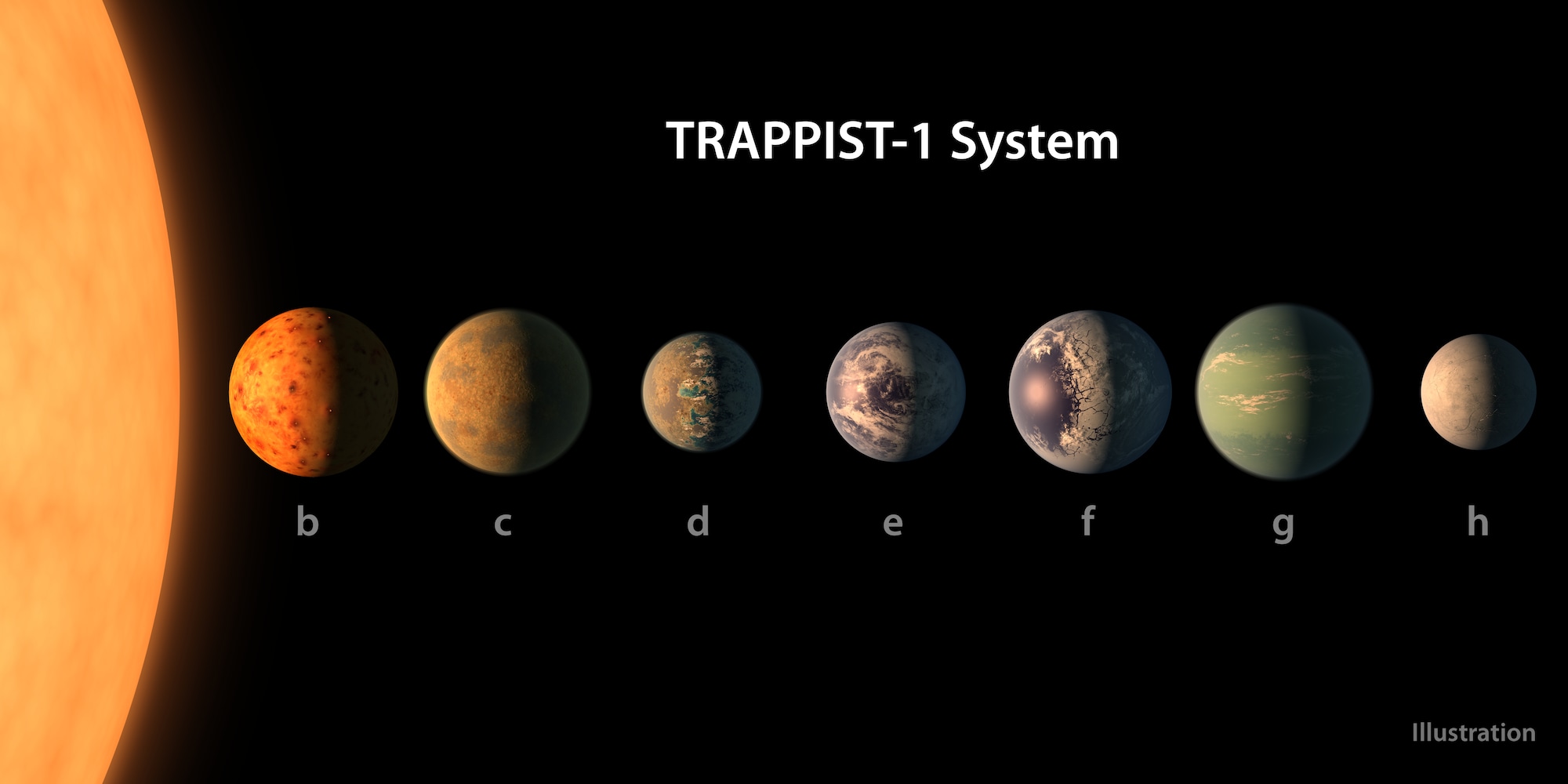 The TRAPPIST-1 System. Image: NASA[/caption] Thomas Zurbuchen, associate administrator of NASA’s Science Mission Directorate said, “This discovery could be a significant piece in the puzzle of finding habitable environments, places that are conducive to life. Answering the question ‘are we alone’ is a top science priority and finding so many planets like these for the first time in the habitable zone is a remarkable step forward toward that goal.” Just a few days after making the announcement, NASA scientists made the raw data from Kepler’s observation run available to the scientific community. Allowing enthusiasts and researchers to dive into the unprocessed data, enabled them to make plans for follow up studies on the planets. The data allowed scientists to make plans and file proposals for observation runs on other telescopes. Scientific papers followed soon after the data was published, with one of the earliest findings confirming that the outermost planet orbited the star every 19 days. [caption id=“attachment_4270265” align=“alignnone” width=“1600”] 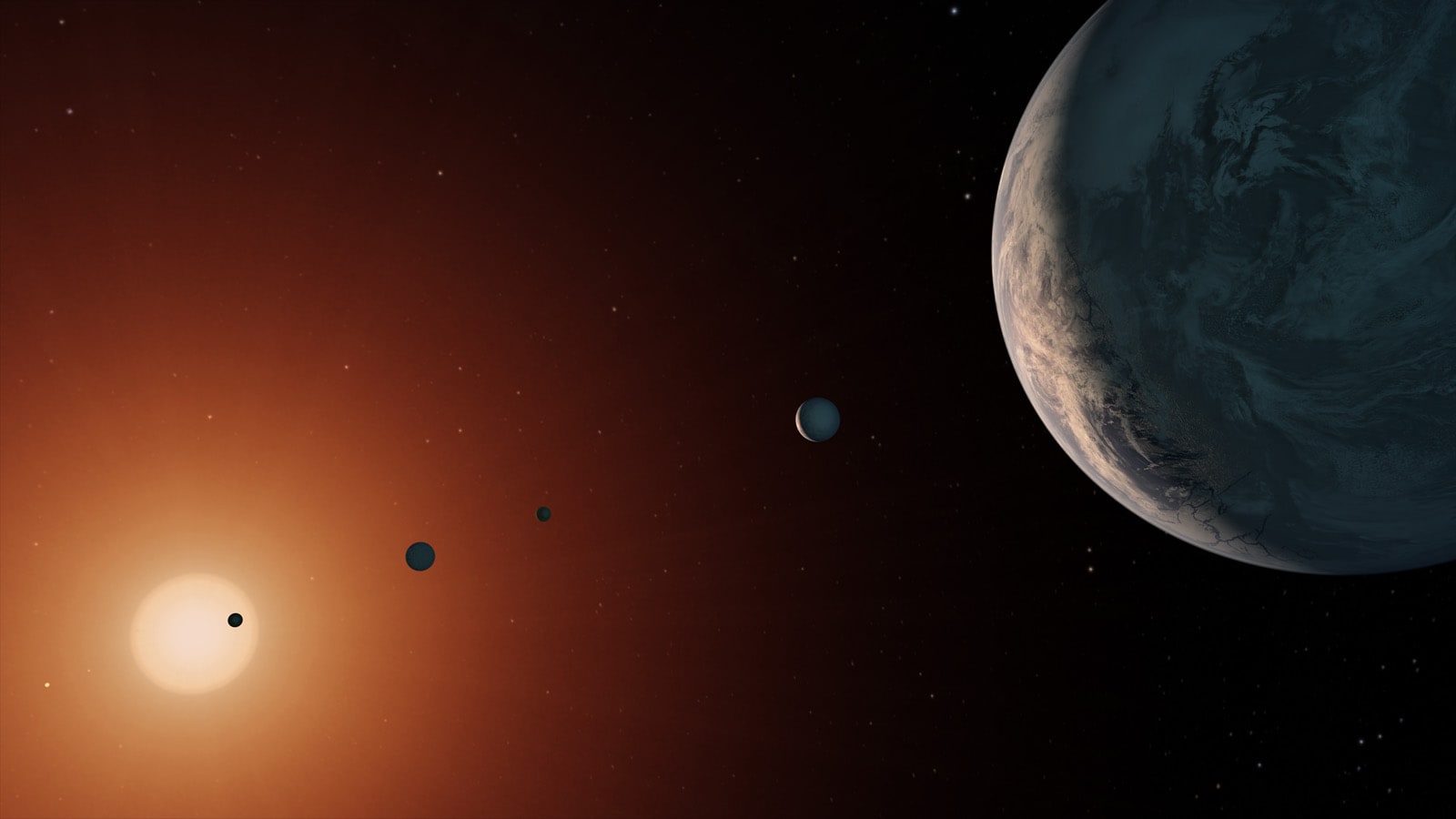 Another concept of the TRAPPIST-1 system. Image: NASA[/caption] The outermost planet in the TRAPPIST-1 system has a year that is as long as 19 Earth days. By comparison, Pluto* goes around Sun once every 248 Earth years. All the seven planets are closer to the star than Mercury is to the Sun. An individual standing on the surface of one of the planets would see several of the others in the skies, even being able to discern surface details. The planets appear to be in more or less a straight line. During the initial discovery, exactly how the planets maintained a stable orbit so close to each other was somewhat of a mystery. The system is ancient and the planets appear to be tidally locked to their host star. This means that the planets no longer rotate around an axis and that one side of the planet constantly faces the star, similar to how the Moon always shows a single face to the Earth. This has implications for the day/night cycles as well as the weather on these planets. One side would bask in perpetual daylight, while another side would be stuck in a never-ending night. A narrow belt between the day and night zones would enjoy an everlasting sunset. At some points on the surface of these planets, an observer can enjoy a sunset that appearing to be frozen in time. [caption id=“attachment_4270269” align=“alignnone” width=“640”]  The view from the surface of one of the TRAPPIST-1 planets. Image: NASA[/caption] About three months after the initial discovery, researchers managed to figure out the intricate orbital dance of the seven planets in the TRAPPIST-1 system. The phenomenon is known as gravitational resonance, where each planet tugs the next planet just enough to keep it in line, and prevent the planets from colliding into each other. Kepler-80 and Kepler-223 were previously known systems with four planets each in gravitational resonance. Neptune, Pluto and the trans-Neptunian object Orcus are all locked in gravitational resonance within our own solar system.
Rodrigo Luger, lead author of the study said, “All of this indicates that these orbital relationships were forged early in the life of the TRAPPIST-1 system, during the planet formation process. The resonant structure is no coincidence, and points to an interesting dynamical history in which the planets likely migrated inward in lock-step. This makes the system a great laboratory for planet formation and migration theories.” About three months after the orbits of the planets in the TRAPPIST-1 system was understood, researchers and musicians collaborated to convert the planetary system into a musical instrument. The melody was derived from the pattern of transits. The pitch corresponded to the orbital frequency of the planets, shifted to a range that human ears can hear. The actual gravitational tugs, were converted to beats through a drum kit where cymbals, hi-hats, a snare and a kick were mapped to conjugations of different pairs of planets. A conjugation occurs when an inner planet races ahead of an outer planet. The instrument can be used on any system, but nothing sounds as good as TRAPPIST-1.
NASA researchers also found out that the TRAPPIST-1 system was older than the solar system. While the solar system is around 4.5 billion years old, the TRAPPIST-1 system is between 5.4 billion and 9.8 billion years old. This study decreased the possibility of finding life on the system as any atmosphere the planets had could be blasted away by the stellar radiation, to which the planets had been exposed to for much longer than Earth. Adam Burgasser, the lead author of the study said, “If there is life on these planets, I would speculate that it has to be hardy life, because it has to be able to survive some potentially dire scenarios for billions of years.” Researchers using data from follow up observations via the Hubble Space Telescope estimated that the inner planets may have lost about 20 Earth oceans worth of water over the last 8 billion years, considering the exposure to ultraviolet radiation from the host star. The outer planets e, f and g, were however not that exposed to the radiation and would have lost significantly less water over the same period, about three Earth oceans worth each. This indicates that liquid water could exist on the surface of the outer planets. E, f and g are also the three planets in the habitable zone around the host star. [caption id=“attachment_4270255” align=“alignnone” width=“1920”] 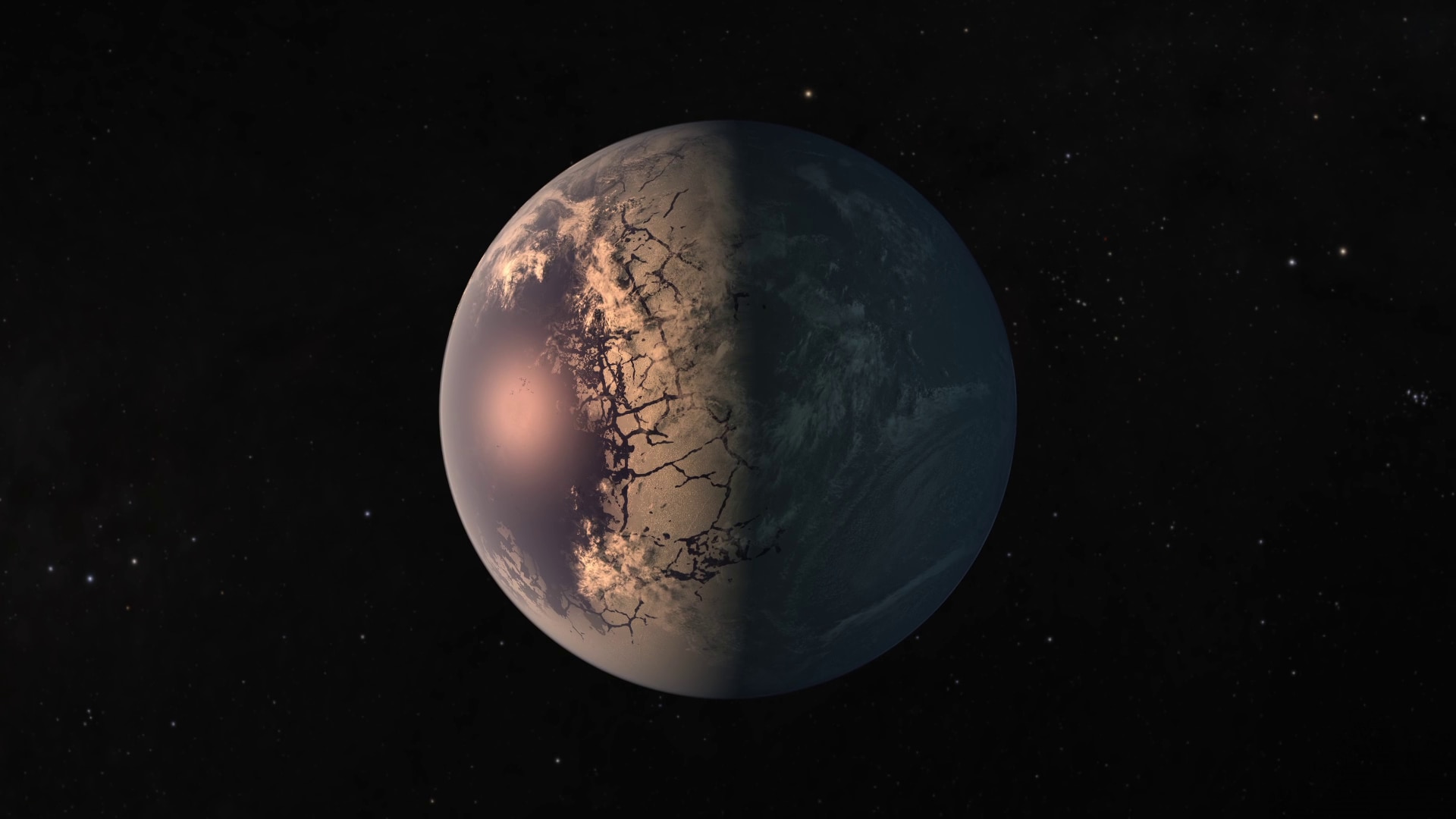 Trappist-1 f, one of the planets in the habitable zone of the star[/caption] Apart from the planets in the TRAPPIST-1 system, a number of discoveries of exoplanets with conditions suitable for supporting life were identified over 2017. Ross 128 b is 11 light years away but moving towards us, Gliese 625 b is 21 light years away, GJ 1132 b is 39 light years away and is the first Earth-like exoplanet known to have an atmosphere, LHS 1140 b is 40 light years away, while K2-18 b is just a little further away at a distance of 111 light years. Four Earth-sized exoplanets were discovered around Tau Ceti, 12 light years away and the closest Sun-like star. In the middle of the year, the Kepler team announced 10 rocky, Earth-sized planets in the habitable zones of their host stars, after surveying 219 exoplanet candidates. Through the year, there were also findings of exoplanets with toxic conditions, unimaginably unsuitable for life. In August 2017, researchers found evidence of the potential habitability of Proxima b, a planet in orbit around Proxima Centauri, the star closest to our Sun. The star blasts the planet with ultraviolet radiation hundreds of times the amount the Sun emits towards the Earth, which means the planet cannot have an atmosphere. [caption id=“attachment_4270261” align=“alignnone” width=“1280”] 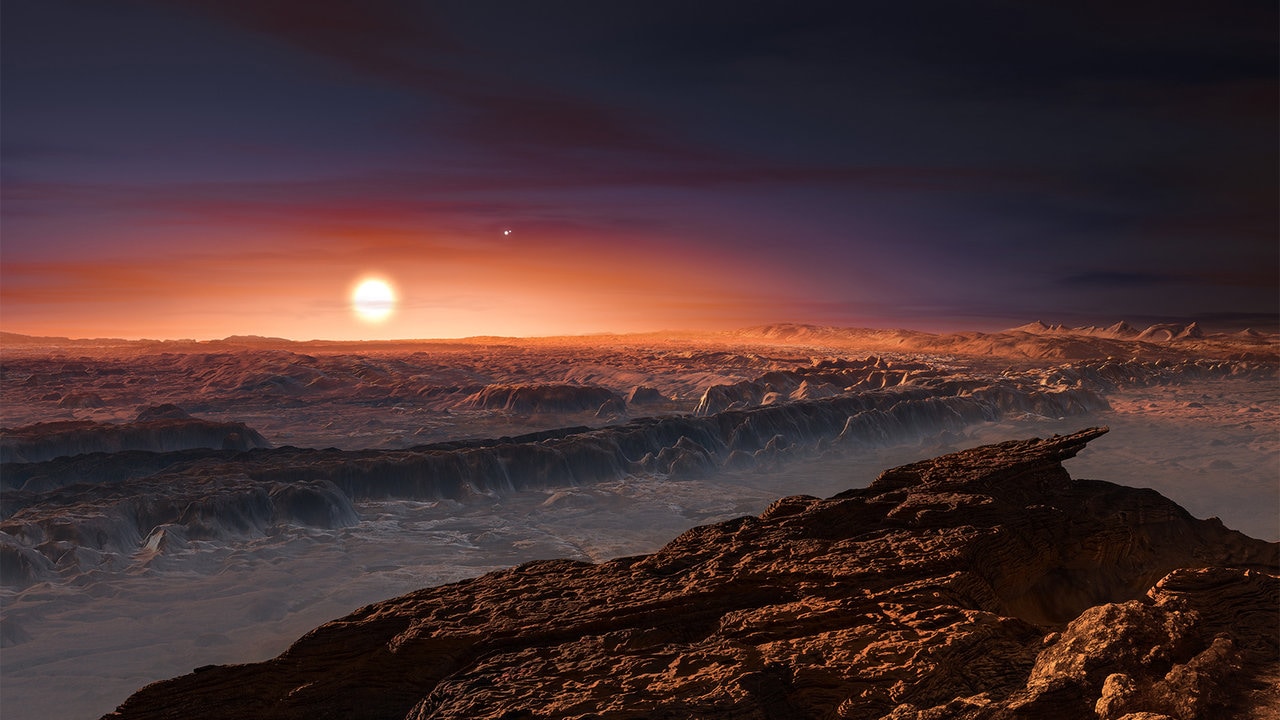 An artist’s impression of the surface of Proxima B. Image: NASA[/caption] WASP-12 b absorbs almost all the light that falls on it and has surface temperatures of 2,537 degrees Celsius. Wasp-19 b is also very hot at 2,000 degrees Celsius, but the atmosphere is rich in titanium oxide, which could provide thermal insulation. The stratosphere on Wasp-121 b is hot enough to boil metals, while WASP-18 b is devoid of any water and has a toxic stratosphere rich in carbon monoxide. 55 Cancri e has water, hydrogen and oxygen just like the Earth, but is blasted with too much heat from the host star to support life. For a summary of our own contribution to space research, head **here** . * If any readers are annoyed that Pluto is being referred to as a planet, do note that planetary scientists who specialise in the study of planets (as against, say astronomers) point out that Pluto is a planet irrespective of whether it is considered as one or not. Pluto is geologically active and has **all the characteristics of a planet**, which is why NASA scientists want to promote it to the status of a planet again. And, according to the current definition by the International Astronomical Union, the Earth fails to qualify as a planet for the same reasons as Pluto.


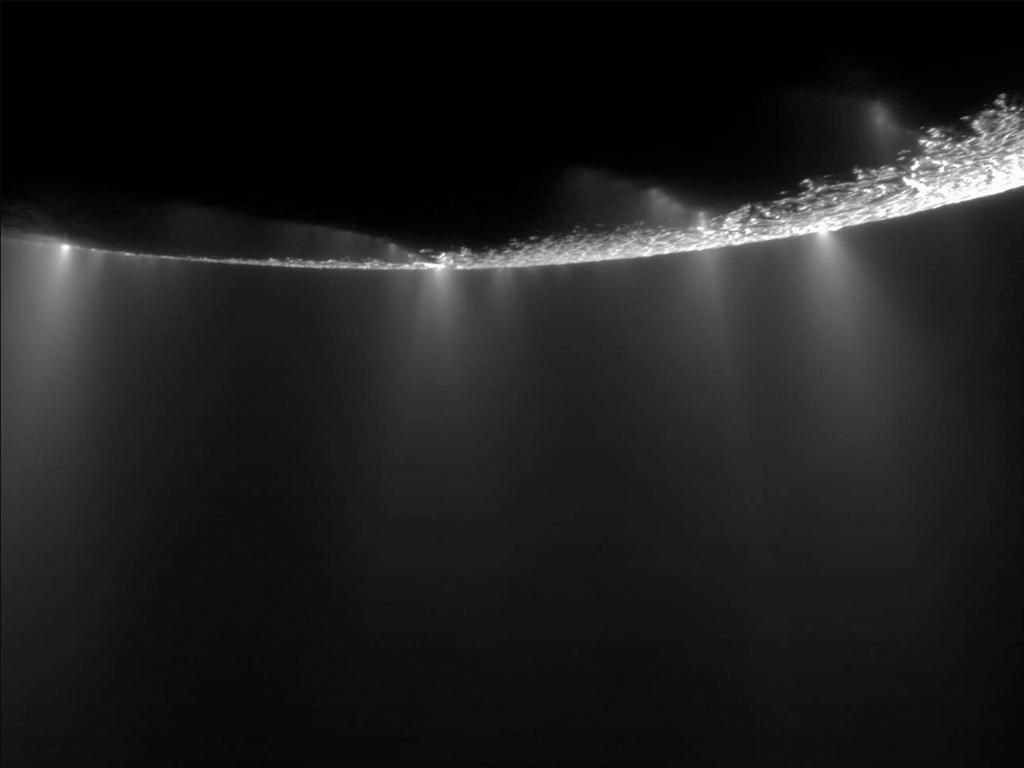)



